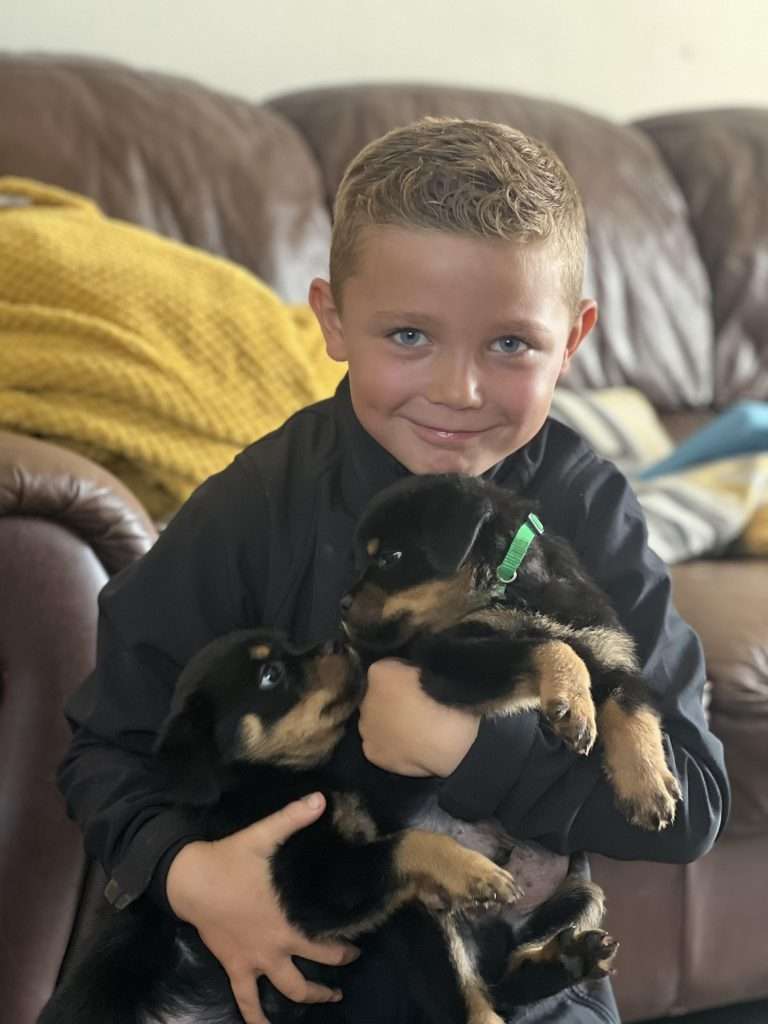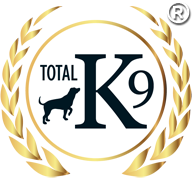Protection dogs are a fantastic addition to the home, offering a wealth of benefits that range from enhanced security to enriching family life with a new canine companion. If you’re considering adding another protection dog to your family, it can improve these benefits and give your dog a furry friend for life. However, integrating multiple protection dogs into your home requires the right training and awareness to avoid potential issues. With the right approach, you can enjoy a multi-dog setup at home that boosts security, provides companionship for the dogs, and creates a harmonious, disciplined pack dynamic.
This guide explores the best practices for having multiple protection dogs at home, covering everything from training and pack management to socialisation, feeding, and avoiding conflict.
Understanding Pack Dynamics
Before bringing multiple protection dogs into your home, it’s important to clear the air around the psychology of pack structure. Dogs are naturally social animals that thrive within a hierarchy. In every group, there will be leaders, followers, and peacemakers. These are roles that develop organically through interaction.
Establishing Yourself as the Leader
No matter how many dogs you have, there must be a clear, consistent human leader. If your dogs sense uncertainty or inconsistency in your leadership, they may begin to challenge one another or compete for dominance. A well-led pack looks to you for cues on behaviour, boundaries, and acceptable interactions. So, it helps to:
• Be consistent with rules and commands.
• Control key resources like food, toys, and access to certain areas.
• Maintain calm confidence, as protection dogs respond best to assertive, composed handlers.
When the human is clearly in charge, the dogs are less likely to engage in fights or power struggles because they know their place in the hierarchy.
Choosing Compatible Dogs
Compatibility is one of the most important factors in successfully owning multiple protection dogs. Not every dog will coexist peacefully, even with excellent training. So you need to think carefully about the right temperament, gender and breed characteristics of your dogs.
Temperament and Energy Levels
Each protection dog has its own temperament and drive. When selecting a second or third dog, aim for complementary personalities rather than identical ones. For example, pairing two extremely dominant males could invite conflict, whereas a balanced mix of assertive and submissive temperaments is more harmonious.
Gender Combinations
Many experienced handlers find that opposite-sex pairs (one male, one female) tend to coexist more smoothly than same-sex pairs, particularly when both are intact. However, this is not a universal rule as it depends heavily on individual personalities and training consistency.
Breed Considerations
If you’re working with professional protection breeds such as German Shepherds, Belgian Malinois, Rottweilers, or Dobermans, keep in mind that each breed has distinct behavioural tendencies. Malinois, for example, have high energy and prey drive, while Rottweilers are more territorial and methodical. Mixing breeds can work well if their drives complement each other, but it’s best to seek professional advice before deciding.
Structured Introductions Are Key
The first introduction between protection dogs sets the tone for their relationship. Rushing this process can lead to tension, fear, or even aggression. So, take your time and plan these early interactions carefully. You will have likely already worked through similar steps if you have correctly introduced your first protection dog to your family home.
Neutral Territory
Introduce the dogs away from your home. This could be somewhere like a park, a field, or a quiet open space. Let them meet on neutral ground so neither feels defensive over territory. Keep both dogs on leads, walking parallel at a safe distance until they relax around each other.
Controlled Proximity
Gradually allow them to sniff one another under supervision. Look for signs of positive interest (relaxed tails, loose body posture) versus tension (stiff bodies, hard stares, raised hackles). Keep the meeting short and end on a positive note.
Home Introduction
Once the dogs are comfortable, bring them home together, but manage their movement. The resident dog should not feel displaced as it’s their territory. Allow each to explore while on lead, keeping interactions calm and neutral. Avoid free-for-all play until you’re confident they’ve accepted one another.
Establishing House Rules
A harmonious multi-dog household depends on structure and routine. Dogs feel secure when they know what’s expected of them. One of the best ways to establish this early is through consistent actions and strong boundaries. This will create the ideal environment and allow you to get the most from having protection dogs at home.
Set Clear Boundaries
Each dog should understand the boundaries you set, such as:
• Where they sleep
• When and where they eat
• Which toys belong to them (if any)
• Which areas of the house or garden are off-limits
This prevents resource guarding and helps reduce tension.
Individual Attention
Even though your dogs are part of a team, they still need individual bonding time with you. Spend one-on-one time reinforcing obedience, playing, or simply relaxing together. This ensures that each dog maintains a strong personal connection with you, not just with the group.
Feeding Multiple Protection Dogs Safely
Feeding time is one of the most common sources of conflict in multi-dog homes. This can be a serious issue if one dog has a socialisation issue like guarding behaviour. Protection dogs, with their strong drives, can be particularly territorial around food.
Separate Feeding Spaces
Feed each dog in a separate crate, kennel, or designated corner of the room. Never allow free feeding, and remove bowls immediately after they finish eating. This eliminates competition and reinforces your control over resources.
Order of Feeding
In some cases, feeding dogs according to the pack hierarchy (starting with the dominant one) can reinforce stability. However, the most important factor is calmness. Dogs should eat only when calm and respectful. If you’re having feeding issues, consider a diet change or consider the palatability of the food they’re getting.
Training Multiple Protection Dogs
Training is the foundation of successful protection dog ownership. When you have more than one protection dog, training becomes even more important. Each dog must respond reliably to your commands individually before they can work as a group.
Individual Training First
Train each dog separately to build strong obedience and focus. Commands like sit, stay, down, come, and leave it must be second nature. Only once they’re reliable on their own should you begin group sessions.
Group Training Sessions
For group training, start with simple drills involving both dogs at a distance, gradually reducing space as they become more comfortable working side by side. Always reinforce calm, controlled behaviour. Group sessions build synchrony and strengthen the dogs’ ability to focus on you instead of one another.
Protection Work
When it comes to bite work or guard training, never train multiple dogs simultaneously without professional supervision. Proper protection work requires precision and control, as one misstep could trigger competition or confusion. A professional trainer (such as those from TOTALK9) can structure these sessions safely and effectively.
Preventing and Managing Conflict
Even with excellent training, disagreements can happen between your dogs. Canines, like people, have moods and personalities. The key is prevention and swift, calm intervention.
Recognise Early Warning Signs
It is really useful to be mindful of the early warning signs of conflict between dogs. This is typically most apparent with body language, so watch for signs of tension such as:
• Prolonged staring
• Lip curling or low growls
• Blocking access to doorways or people
• Stiff body posture
If you notice these actions, then interrupt and redirect the behaviour immediately. A sharp verbal correction or recall command can diffuse the situation before it escalates.
Avoid Triggers
Common triggers for fights include food, toys, beds, or human attention. Control access to these items and enforce fairness. Try to remember that no dog should feel favoured.
Crate or Kennel Training
Crates are invaluable tools for managing multiple protection dogs. They provide safe, personal spaces where dogs can rest and decompress. Rotating crate time helps prevent overexcitement and reinforces your authority over when and how interactions occur.
Exercise and Stimulation
Protection dogs are working animals, so they need both mental and physical stimulation to stay balanced. Under-exercised or bored dogs are more prone to mischief and conflict.
Separate and Group Exercise
While it’s beneficial for dogs to exercise together, ensure they also have individual workouts to build independence and focus. Group walks teach cooperation and reinforce leadership, but avoid high-stimulation environments until you’re confident they can remain calm around each other.
Structured Play
Avoid chaotic or competitive games that could cause rivalry, such as tug-of-war between dogs. Instead, engage in structured fetch, obedience drills, or scent games that encourage teamwork and cooperation under your supervision.
Mental Challenges
Incorporate training refreshers, obedience drills, and puzzle toys to keep their minds sharp. Mental engagement is just as important as physical activity, particularly for intelligent working breeds like Malinois or Shepherds.
Maintaining Routine and Consistency
Dogs, especially protection breeds, thrive on predictability. A consistent routine helps them understand expectations and feel secure in the hierarchy. So, make sure that you provide a daily routine that they can depend on. This includes routines for:
• Feeding
• Walks and training
• Rest periods
• Play and enrichment
Stick to this schedule as much as possible. Consistency in your leadership reinforces trust and prevents anxiety or frustration.
Balanced Work and Rest
Protection dogs will also require downtime to recharge. Ensure each dog has its own safe, quiet space for resting. Overworking or overstimulating them can lead to irritability or burnout.
Socialisation and Environmental Exposure
Even though your dogs are trained for protection, they still need to be social and adaptable. Overly isolated protection dogs may become reactive or suspicious inappropriately, which can be dangerous.
Controlled Socialisation
Expose your dogs to different environments such as parks, car rides, visitors, and public settings, under strict control. This is a great tool for strengthening their adaptability and making them less prone to getting startled. Teach them that calm, neutral behaviour is rewarded while overreaction is corrected.
People and Animals
Multiple protection dogs can coexist safely with children, guests, and other pets, provided they are trained and boundaries are enforced. However, introductions should always be calm, slow, and supervised. Never allow strangers to interact with your protection dogs without your explicit command.
Working with Professionals
Even experienced handlers benefit from professional input when managing multiple protection dogs. A professional trainer ensures that your dogs’ skills and behaviour remain sharp, controlled, and up to standard.
Regular Check-Ins
Schedule periodic sessions with a qualified protection dog trainer to fine-tune obedience, evaluate pack dynamics, and address any emerging behavioural issues.
Board and Train Options
Some owners find it beneficial to send one or more dogs for in-house or one-on-one refresher courses. This provides professional reinforcement of structure and can help recalibrate the balance within the household.
Enjoy the Perks of Multiple Protection Dogs With the Right Approach
Owning multiple protection dogs is immensely rewarding, but it requires discipline, structure, and a deep understanding of canine psychology. The most successful multi-dog households are not ruled by dominance or chaos but by calm leadership and clear communication.
Remember that you are the leader, not just the owner of these dogs. With proper structure and training, you can prevent conflict and help strengthen a lifelong bond between your protection dogs.
When every dog understands their place and purpose, your home can run like a well-balanced unit. They will act as loyal, obedient, and well-trained protection dogs that are ready to defend when truly needed.

